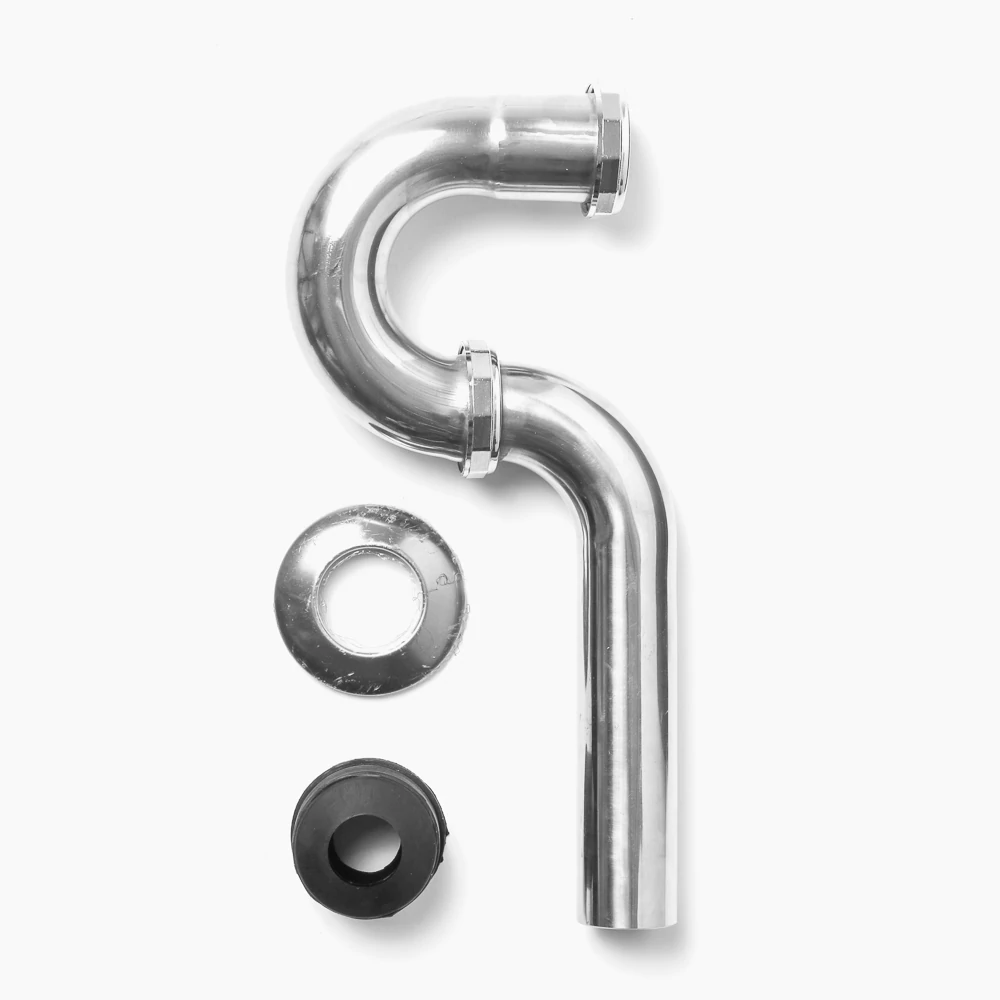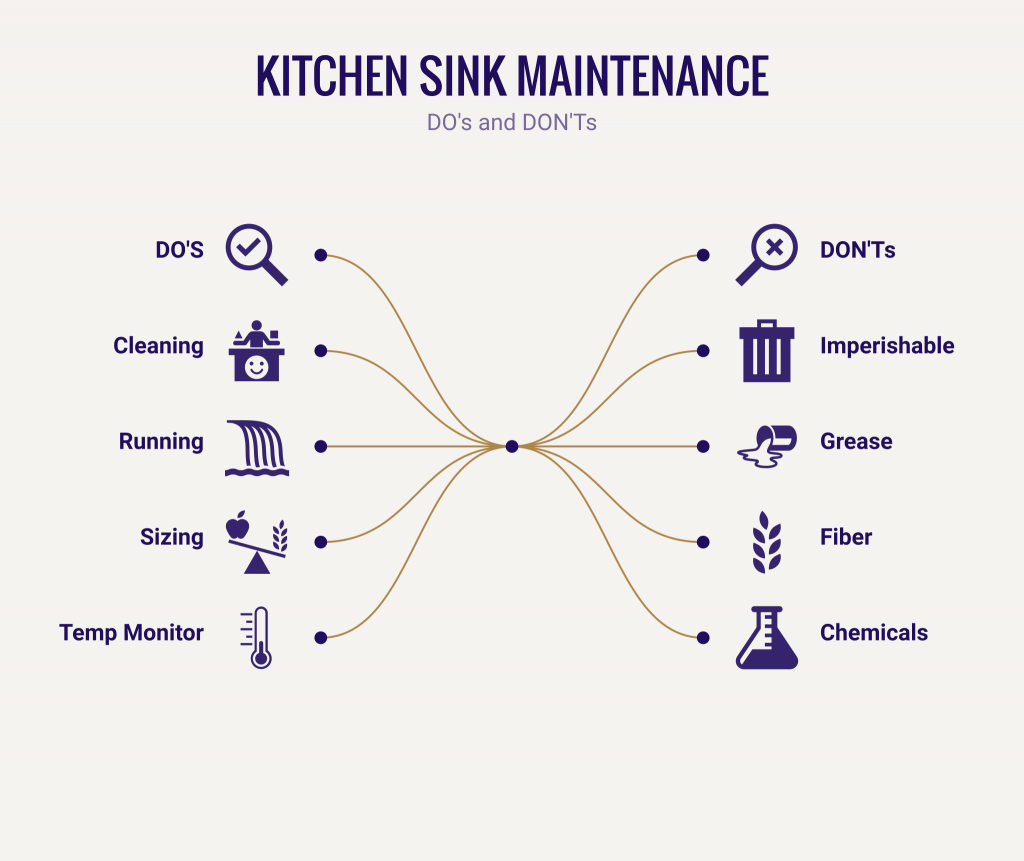Do you have difficulty figuring out why you have that stinky smell in your kitchen? Try to go near your kitchen sink and tell me if the odor came from it. Now, most kitchen sinks have garbage disposals. And having disposals is an outstanding appliance to make kitchen work less demanding. But if not operated properly, the garbage disposal can easily break down, clog, or block, causing a long list of drain issues such as stinky odor.
It’s embarrassing to have a stinky kitchen, especially if you expect visitors. You are having time pressure, and you also don’t have enough budget to hire a plumber, so what should you do? This article will reveal the secrets of garbage disposal and how to treat that stinky odor on your kitchen sink. So, keep reading, and don’t forget to share your cleaning tips and stories in the comment section!
HOW GARBAGE DISPOSAL WORKS

A lot of people think that the garbage disposal looks like a blender, but it really doesn’t. Most garbage disposal has no blades inside them at all. In reality, it has two compartments, and one of those compartments is like a cheesegrater where it catches and grates food to make them smaller. There are also plates between the compartments that spin to make the food move while in contact with the grater-like chamber. And when the food is wet enough, it will fall through the plates and comes out the side into your drain line.
But because there are no blades, like what you see in blenders, the food can get stuck inside the disposal. Imagine cleaning your cheese grater; it’s very tricky, right? That’s how the stinky smell develops. Because the food is not ultimately shredded and disposed of, it will be stuck and mold, producing an unwanted odor in your kitchen sink.
CLEANING THE GARBAGE DISPOSAL
As mentioned above, the garbage disposal is the prime suspect for that stinky odor in your kitchen. It may seem complicated to think about how to fix this because your disposal is hidden in your sink. But don’t worry, here are the primary ways to clean your disposal without removing it in its place.
💧 Ice, salt, and lemon
You can’t remove all the garbage disposal parts, but there’s still a way to clean it. One recommended practice is piling up ice, lemon, and salt. This will work by running cold water down the disposal. The principle behind this is to make the food particles become hard so that they can fly around and go down the drain.
After running cold water, the salt comes in. If you are wondering what the salt will do, here’s the answer. The scientific explanation for this is that salt makes things colder fast. So put salt and lemon on your tons of ice. Then, dump the ice on your disposal as the cold water is still running down the sink. So when you hear the ice is done, keep the cold water running for 30 seconds more to make the stuff totally flushed out.
💧 Citrus
If your disposal still smells stinky after you’ve done the first tip, some manufacturers recommend putting citrus fruits down your disposal. It may seem effortless, but if you do it wrong, you’re going to create a stoppage. To do this, get your available citrus fruit and cut it up into the smallest pieces. This works because the fruit is strong enough to kick off the debris in the disposal. But if you don’t cut it enough, the disposal won’t be able to handle it, and the rinds might create a blockage.
Also, don’t forget to cut the fruits into eight pieces or more and put the pieces one at a time. You can combine the first step, which is the ice method, to get the most out of it. It is also essential to keep the water running to wash away the fruit and protect the drain line after disposal.
💧 Check the flap
Garbage disposal has a rubber flap that can collect debris and result in spoilage. So get liquid dish soap and a brush and start cleaning up on the bottom side of the disposal. Brush the rubber part thoroughly, and you will see the crud coming off, and unless you clean it from the bottom, you’re not getting that crud out and can cause the odor to stink. So, make this cleaning be part of your daily routine to make your kitchen fresh.
FOCUSING ON P-TRAP

Most drains have a P trap. So the first measure you should do is check that the P trap has water in it. The water will suppress sewer gas from coming up into your sink. You can remove the P trap by loosening the two knots that hold it in place. Then, take a look and check if there’s water down in it.
There is also biofilm in some of the P traps, which needs to be removed. You have to unscrew the pivot rod, so turn the nut counterclockwise to remove it from the drain. And removing the pivot rod will allow you to remove the pop-up stopper, which collects grime and muck.
To clean it:
- Use a toothbrush to brush the pop-up stopper.
- Get a paper towel and push it down the drain.
- Use a drain brush to help push the paper towel down even further. This method will make you scrape the sides of your drain and remove any other biofilm on it.
- Drag the gooseneck from the wall and take a spoon to scrape out any sediment in the wall drain.
REGULAR SINK DRAIN
If you have a regular sink drain or those that do not have a garbage disposal, you can still find a way to remove that foul odor roaming around your kitchen.
💦 Grease-free sink
To do this, keep your sink drain flowing and grease-free by periodically cleaning your sink drain. You will need enzyme liquid from a local hardware store, baking soda, white vinegar, hydrogen peroxide, and salt. For the first step, dissolve the enzyme liquid (or powder) in water and pour it down your sink drain.
Then, mix half a cup or eight tablespoons of baking soda and white vinegar. Pour it on the drain and let the mixture sit for a few minutes. After 5 to 10 minutes, flush your sink drain with warm water. Lastly, mix equal parts of hot water and salt. Pour it again down the drain to help dissolve the grease and stinky smells.
💦 Disinfection
Another tip for cleaning your drain is by using hydrogen peroxide. To do this, mix hydrogen peroxide with baking soda at 1:2 measurement. Then pour it on your sink. While letting the mixture sit there, mix a cup of salt, baking soda, and white vinegar, then toss it in your sink. After that, flush everything with hot water to have a nice and fresh kitchen sink.
KITCHEN SINK MAINTENANCE

No odor will escape from your sink if you know how to take care of it properly. Cleaning the sink drain is one of the most skipped parts of kitchen cleaning. So before all the debris could accumulate, follow these general, do’s and don’ts sink maintenance.
✔ What you must do
💧 Cleaning
Always keep your garbage disposal clean. Follow the hacks listed above to keep your disposal alive for years. You can try putting some liquid dish soap first, and if the odor still exists, you can start choosing from the methods given in this blog.
💧 Running
Operating the disposal is one of the most crucial things to maintain as a household owner. It will help if you run the garbage disposal regularly. Running the disposal will prevent rust build-up and corrosion. This will also ensure that all parts stay moving and eliminate accumulated obstructions from food or debris.
💧 Sizing
Make sure that the food you throw is in small size and put them one at a time. It is important not to push everything in the disposal because it will exhaust the appliance and can break its parts off. You can grind or cut the food and use a strong and cold water flow while throwing them at your disposal.
💧 Temp monitoring
If you are being confused about what water temperature you must use, here’s the deal. Use hot water if you want to remove the grease in the sink, and use cold water if you’re going to solidify the oil on food for easy grinding before reaching the trap.
❌ What you must not do
💧 Choose what to put
The general rule for garbage disposal is not to put anything that is not biodegradable. Remember that it is not a regular trash can where you throw anything you like. Garbage disposals are for food scraps only. Remember that non-food items can damage the motor parts at your disposal. If you are in doubt about the things you throw in the garbage disposal, it is better to throw them out on your trash can instead.
💧 Grease
Do not pour food oil or grease into your garbage disposal or regular drain as much as possible. This is because the fat will slowly accumulate and destroy your disposal’s grinding ability as well as can clog the pipes and drains.
💧 Fiber
If you had corn or celery for your meal, do not grind the fibrous materials such as the corn husk. They are biodegradable, but fibers from these foods can still jam and tangle at your disposal. Do not also put expandable or stretchable foods such as rice and pasta. This is because they expand whenever in contact with water so that they may block your pipes in no time.
💧 Chemicals
As you noticed on the list of methods above, there are no harsh chemicals like strong bleach were mentioned. Some drain cleaners have hazardous and potent chemicals that can destroy your pipes and garbage disposal. Using natural methods is still advisable because they also work as sanitizers and odor-remover.
BOTTOM LINE
Over time, a clogged sink drain can cause all sorts of problems, including foul odors and overflowing drains. Nevertheless, if you really want to know how to get rid of a bad smell in your sink, the first step is assessing what might be causing it. Once you find out what is causing the foul odor, you can quickly treat the problem and then focus on cleaning up the area with some effective sanitation techniques.
Smelly kitchen sink drains are a problem that can possess a foul odor that everyone in the house will be able to tell. The best way to avoid having these stinky odors is always to keep your sink free of debris down below and not allow leftover food to get into the garbage disposal.
Next time you get a stinky odor from the kitchen sink drain, try the methods and applications above, and you’ll solve your problem. I hope this blog is practical and valuable to fix the stinky odor from the kitchen sink drain.
If you already solved your kitchen odor issues but you noticed some little worms crawling, click here to know the reasons and how to remove them.
